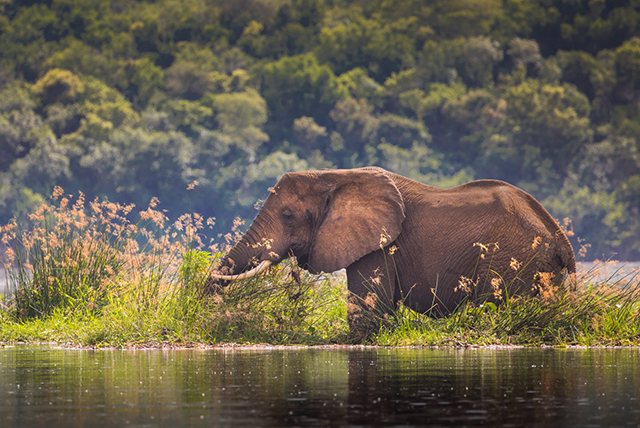Cape Town
Cape Town: A Gem on the African Coast
Cape Town, frequently called the “Mother City,” is a lively and diverse destination set against the backdrop of majestic mountains and the expansive Atlantic Ocean. It is a sought-after spot celebrated for its breathtaking landscapes, deep-rooted history, and vibrant culture.
Must-See Highlights:
Table Mountain: A majestic flat-topped mountain that stands proudly over the city’s skyline. Embark on a journey to the summit by hiking or opt for the cable car to soak in breathtaking vistas.
V&A Waterfront: A lively waterfront area brimming with shops, restaurants, museums, and the historic Victoria Wharf.
Robben Island: A historic site where Nelson Mandela spent years in confinement. Hop on a ferry to the island and explore the museum to uncover the rich tapestry of South Africa’s history.
Kirstenbosch National Botanical Garden: An enchanting garden showcasing vibrant fynbos vegetation and awe-inspiring vistas of Table Mountain.
Cape Point: The westernmost point of the African continent, showcasing breathtaking coastal views and exhilarating hiking paths.
Boulders Beach: A vibrant colony of penguins nestled in Simon’s Town, offering an incredible opportunity to observe African penguins in their natural habitat.
Lion’s Head: An exhilarating hiking trail offering breathtaking vistas of the city and the Atlantic Ocean.
Exciting Activities:
Hiking: Discover the numerous trails that beckon in and around Cape Town, featuring iconic spots like Table Mountain, Lion’s Head, and the breathtaking Cape of Good Hope Nature Reserve.
Beaches: Immerse yourself in the stunning landscapes of Cape Town’s beaches, including Camps Bay, Clifton, and Llandudno.
Wine Tasting: Explore the enchanting vineyards of the Cape Winelands, featuring Stellenbosch, Franschhoek, and Paarl.
Whale Watching: Encounter southern right whales as they journey through their migration season from Hermanus.
Shark Cage Diving: Experience the thrill of being in a cage surrounded by magnificent great white sharks in Gansbaai.
Explore the vibrant tapestry of Cape Town by immersing yourself in its museums, art galleries, and historical sites, where every corner holds a story waiting to be discovered.
Ideal Moments to Explore:
The ideal time to explore Cape Town is in the spring (September to November) or autumn (March to May), when the weather is delightful and the crowds are more manageable.
Cape Town is a lively and dynamic city brimming with a variety of exciting attractions. No matter your interests—be it the great outdoors, rich history, vibrant culture, or thrilling experiences—this stunning city has something to offer everyone.
Cape Town
Cape Town, a vibrant city and bustling seaport, serves as the legislative capital of South Africa and the heart of the Western Cape province. The city is nestled at the northern tip of the Cape Peninsula, approximately 30 miles (50 kilometers) from its southernmost edge, just north of the iconic Cape of Good Hope. Cape Town, recognized as the country’s “mother city,” holds the distinction of being the site of the first European settlement in South Africa.
Cape Town boasts a stunning landscape: sections of the city and its suburbs meander along the steep inclines of Table Mountain (3,563 feet [1,086 metres] high) and its neighboring peaks, hugging the shores of Table Bay; other areas rest on the flatlands below the slopes or extend southward across the plains to False Bay. The city spans an impressive 116 square miles (300 square kilometres). Population estimate for 2005: urban agglomeration, 3,103,000.
Geographical features and human interactions
The essence of the city
The city of Cape Town began its journey in 1652, when the Dutch East India Company set up a refreshment station for its ships along the picturesque shores of Table Bay. The setting was breathtaking, on lush, rich land, nestled beneath the towering cliffs of Table Mountain. The native people offered cattle but not labor, while the company brought in slaves, primarily from East Africa, Madagascar, and the Bay of Bengal region. The enslaved individuals carried with them elements of their culture and, particularly in the instance of the Muslims from the East Indies, their faith. Mixed-race unions emerged, yet vibrant racial and ethnic traits persisted. In 1781, the French set up a garrison to assist the Dutch in defending the city from British assaults, and their presence left a mark on the local architecture and culture. The British presence in the 19th century introduced fresh ideas in governance and law, along with newfound liberties for the enslaved. Cape Town served as the entry point for Europe’s exploration into the heart of South Africa, fostering strong connections with the continent.
Today Cape Town is a vibrant city brimming with excitement, featuring towering office buildings and bustling pedestrian malls. While it serves as a significant political and economic hub, its charm lies in its stunning location nestled between mountains and the sea, its diverse population, and the open-mindedness of many of its residents.
The terrain
The urban landscape
The initial settlement of Cape Town was nestled between the majestic Table Mountain and the inviting waters of Table Bay. It was surrounded on the northwest by the majestic ridges of Lion’s Head and Lion’s Rump (later known as Signal Hill), on the north by the sparkling waters of Table Bay, on the south by the imposing Devil’s Peak, and on the east by the lush marshlands and the expansive sandy Cape Flats beyond. The closest arable land could be found on the lower eastern slopes of Devil’s Peak and Table Mountain, and further southeast at Rondebosch, Newlands, and Wynberg. From the fortress that safeguarded the settlement, a path wound south through these lands to False Bay on the eastern side of the Cape Peninsula, extending further past Muizenberg and Kalk Bay to Simon’s Bay, where the East Indiaman trade ships could seek refuge from the fierce northwesterly winter gales. The majestic mountains, vast sea, and endless sands guided the evolution of Cape Town, influencing the layout of its roads and railways in a remarkable journey of development. A railway line made its way to Wynberg in 1864 and then to Muizenberg in 1883, while another line ventured eastward from Cape Town across the Flats into the interior.
The climate of Cape Town is of the Mediterranean variety, uniquely shaped by the towering presence of Table Mountain and the chilly Benguela Current from the South Atlantic Ocean. The typical high temperature reaches 70° F (21° C) during January and February, while the average low dips to 55° F (13° C) in July. However, the mountain slopes and coastal areas experience cooler temperatures. Freezing happens rarely. Typically, rain graces the region on 69 days each year; roughly half of the 26 inches (660 millimetres) of yearly precipitation falls during the southern winter months of June to August. The amount of rainfall shifts dramatically depending on how close you are to the mountain, with regions near the slopes soaking up as much as double the precipitation compared to those further away. The winds, often fierce, sweep in from the northwest during winter and shift between the southeast and southwest in the summer months. When the southerly winds blow, they create a captivating cloud cover over Table Mountain, famously referred to as the “tablecloth.” The winds are known as the “Cape doctor” for their role in maintaining low levels of air pollution.
The design of the city
The winding paths of the early settlement meandered alongside the coastline. The path winding from the coastline to the Dutch East India Company’s produce garden transformed into the bustling main route. Initially known as the Heerengracht, after the canal in Amsterdam sharing its name, it was renamed Adderley Street in 1850. As the town expanded, other main roads emerged alongside it. On Strand Street, where the waves of Table Bay once lapped at the shore, rises the Castle of Good Hope, constructed by the company between 1666 and 1679. Close to the Castle, the Botanic Gardens unfold, divided by Government Avenue and watched over by the imposing government buildings. A parliament building, built for the colonial government and first occupied in 1885, transformed into the seat of the Parliament of the Union of South Africa in 1910 and later of the Republic of South Africa in 1961. The building welcomed new additions in 1987.







